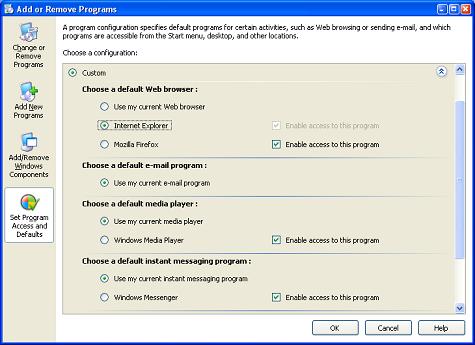Navigating the Digital Landscape: A Comprehensive Guide to Changing the Default Web Browser in Windows XP

In the modern digital era, web browsing has become an indispensable part of our daily lives, allowing us to access information, communicate with others, and explore the vast expanse of the internet. Windows XP, although considered a legacy operating system, still retains its relevance for many users around the world. While Internet Explorer was the default web browser bundled with Windows XP, users have the freedom to choose their preferred browser for navigating the web. In this extensive guide, we will delve deep into the intricacies of changing the default web browser in Windows XP, providing users with a detailed roadmap to customize their browsing experience according to their preferences.
Understanding the Significance of Default Web Browser:
Before we embark on the journey of changing the default web browser, it is crucial to grasp the importance of this setting within the Windows XP operating system. The default web browser dictates which application opens when you click on hyperlinks or attempt to access web content from other applications. While Internet Explorer is the default choice out of the box, users have the liberty to switch to alternative browsers like Mozilla Firefox, Google Chrome, or Opera, each offering unique features and functionalities to enhance the browsing experience. Changing the default web browser allows users to tailor their digital experience, ensuring compatibility, security, and personalization in their web interactions.
Step-by-Step Guide to Changing the Default Web Browser:
Now, let’s embark on a systematic journey to change the default web browser in Windows XP:
Step 1: Accessing Internet Options:
- Begin by clicking on the “Start” button located at the bottom-left corner of the screen.
- Navigate to the “Control Panel” and double-click to open it.
- Within the Control Panel window, locate and select the “Internet Options” icon.
Step 2: Configuring Program Associations:
- In the Internet Properties window, navigate to the “Programs” tab.
- Under the “Programs” tab, click on the “Set Programs” button located in the “Internet Programs” section.
Step 3: Selecting Default Web Browser:
- In the Set Programs window, click on the “Set your default programs” link.
- A list of installed programs will appear. Scroll down and select your preferred web browser from the list.
- Once selected, click on the “Set this program as default” button to establish the chosen browser as the default for all supported file types and protocols.
- Alternatively, you can click on the “Choose defaults for this program” button to customize specific file types and protocols associated with the selected browser.
Step 4: Confirming Changes:
- After setting the default web browser, click on the “OK” button to confirm the changes and close the Set Programs window.
- Lastly, click on the “OK” or “Apply” button in the Internet Properties window to save the changes and close the window.
Advanced Techniques and Tips:
For users seeking further customization or additional control over their default web browser settings, consider the following tips:
- Browser-Specific Settings: Many web browsers offer built-in options to set themselves as the default browser directly from within the application’s settings or preferences menu. Consult the browser’s documentation or support resources for specific instructions tailored to each browser.
- Registry Modifications: Experienced users can opt to change the default web browser by manually modifying registry keys. However, caution should be exercised, as incorrect registry modifications can potentially lead to system instability or undesired behavior.
- Third-Party Tools: Various third-party utilities and tools are available that offer advanced features for managing default programs and file associations in Windows XP. Explore these tools for additional customization options and enhanced control over default program settings.
Conclusion:
In conclusion, changing the default web browser in Windows XP is a simple yet impactful way to personalize your browsing experience and optimize your digital interactions. By following the step-by-step guide outlined in this article and considering advanced techniques and tips, users can effortlessly transition to their preferred web browser, ensuring a seamless and tailored browsing experience on their Windows XP system. Whether you favor the familiar interface of Internet Explorer or opt for the enhanced features of alternative browsers like Firefox or Chrome, mastering the process of changing the default web browser empowers you to navigate the digital landscape with confidence and convenience. So seize control of your web browsing journey today, make the switch to your preferred browser, and embark on a personalized and optimized online experience with Windows XP.







